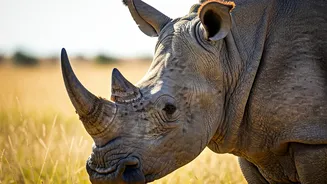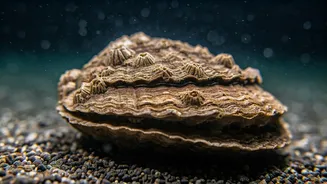The Aye-Aye's Tail
First up is the aye-aye, a peculiar lemur from Madagascar. The aye-aye's tail isn't just large; it's a significant part of its identity. This fluffy tail serves
as a counterbalance as it navigates the treetops with remarkable agility. It allows them to maintain their balance as they leap and climb, preventing falls. This adaptation is crucial because the aye-aye spends much of its time in the canopy, searching for food. The tail also plays a role in communication, with the aye-aye using it to signal other members of its species, though the specific nuances of this tail-based communication are still being studied.
The Lion's Tail
Lions, symbols of strength and power, also benefit greatly from their tails. Unlike the aye-aye's, the lion's tail has a tassel at the end. This tassel is more than just decoration; it serves a communication role. Lions use their tails to signal their intentions, convey their mood, and coordinate movements within a pride. A swishing tail might indicate contentment, while a twitching tail could signal alertness or aggression. In addition to this, the tail helps maintain balance during high-speed chases and maneuvers, critical for both hunting and evading rivals.
The Squirrel's Tail
Squirrels are acrobats, darting across branches and leaping from tree to tree with ease. The squirrel's bushy tail is a marvel of adaptation, providing essential support. It functions as a rudder, guiding the squirrel's movements as it makes daring leaps. The tail also aids in balance, counteracting the squirrel's weight as it navigates precarious positions. Additionally, the tail serves as insulation during cold weather, keeping the squirrel warm. During interactions with other squirrels, the tail acts as a visual cue, communicating the squirrel's intentions and emotions. It also helps to distract predators.
The Peacock's Tail
The peacock is well-known for the male's extravagant tail, which is a display of flamboyant beauty. This tail is made up of elongated feathers, adorned with eye-like spots. While it is less about the animal's physical balance, it's a critical tool for attracting mates. The size and quality of the peacock's tail reflect the male's health and vitality, making it a key factor in sexual selection. The display is a dance of colors and patterns, a signal to potential mates. It also plays a role in defending against predators; a sudden display might startle predators, giving the peacock time to escape.
The Beaver's Tail
Beavers, known for their dam-building skills, have a unique tail that is flat and paddle-shaped. This tail is versatile and used in multiple ways. It acts as a rudder in water, enabling the beaver to navigate and control its movements underwater. On land, the tail serves as a prop, supporting the beaver as it sits upright to gnaw on trees. The tail is also used for communication; beavers slap their tails on the water surface to warn other beavers of danger. Furthermore, the beaver's tail stores fat, providing energy reserves for the winter months.




